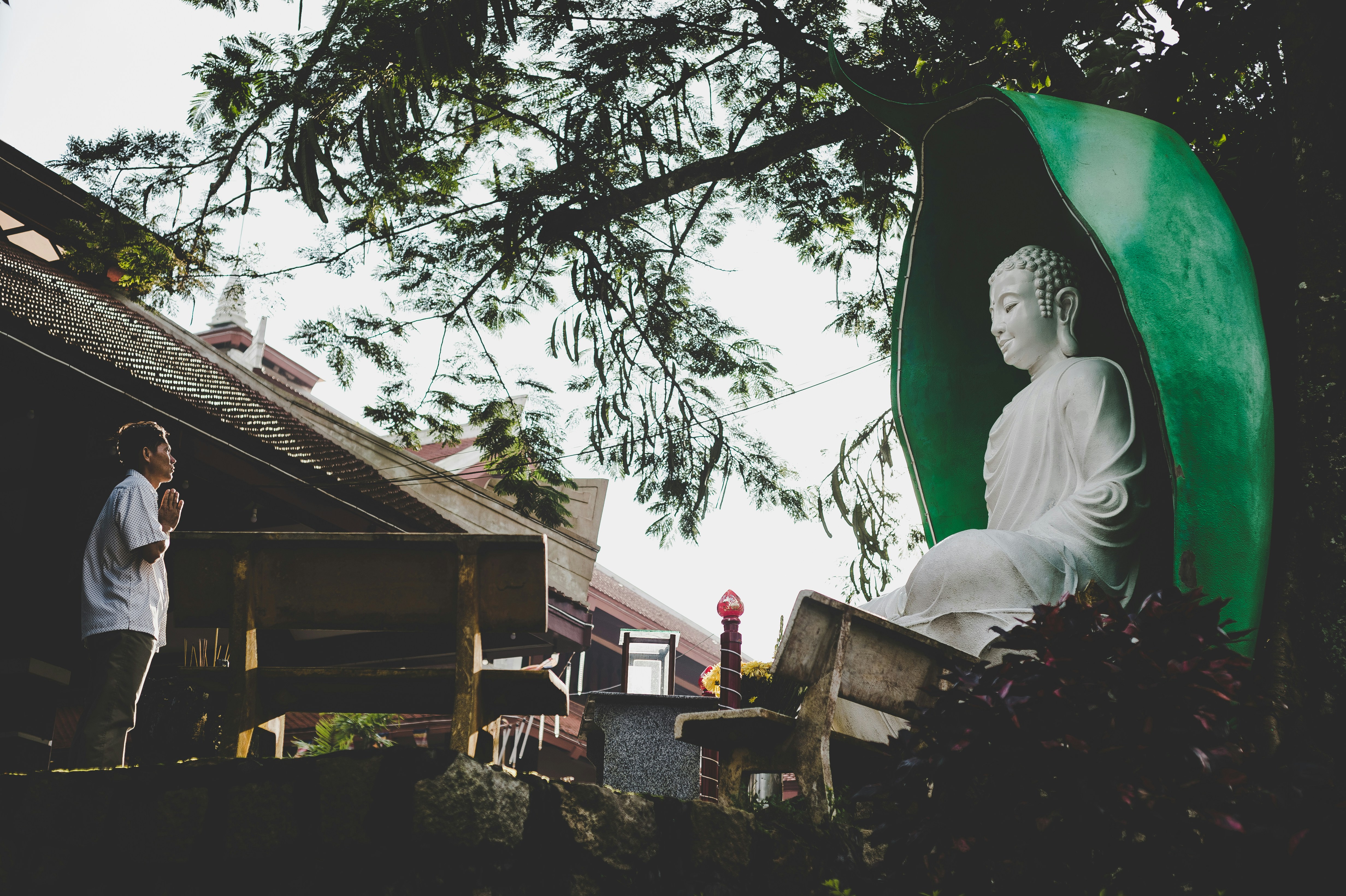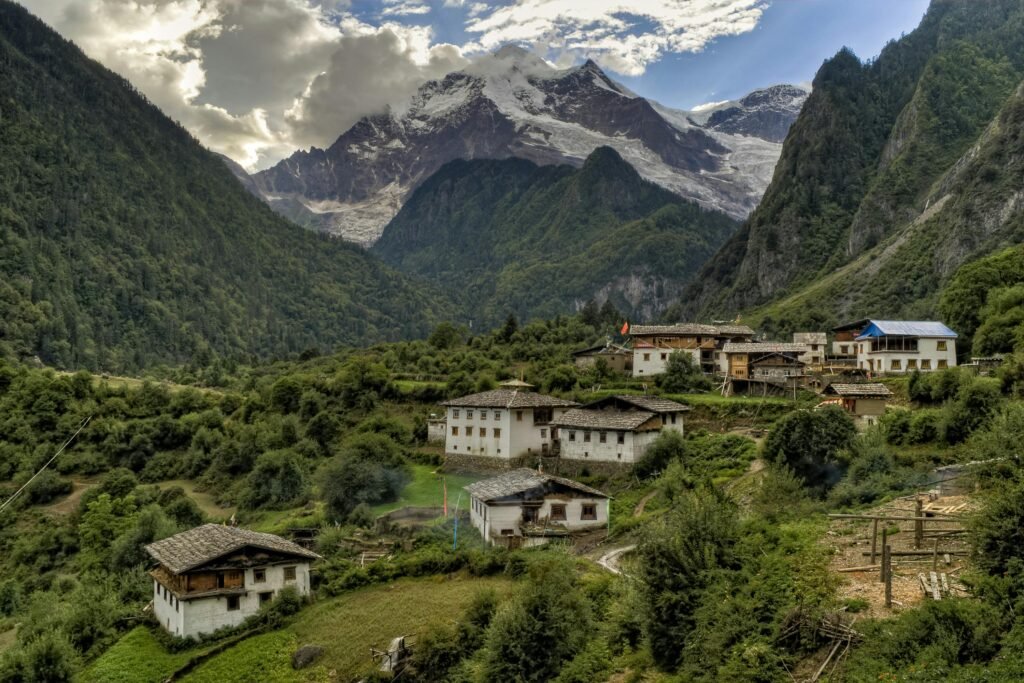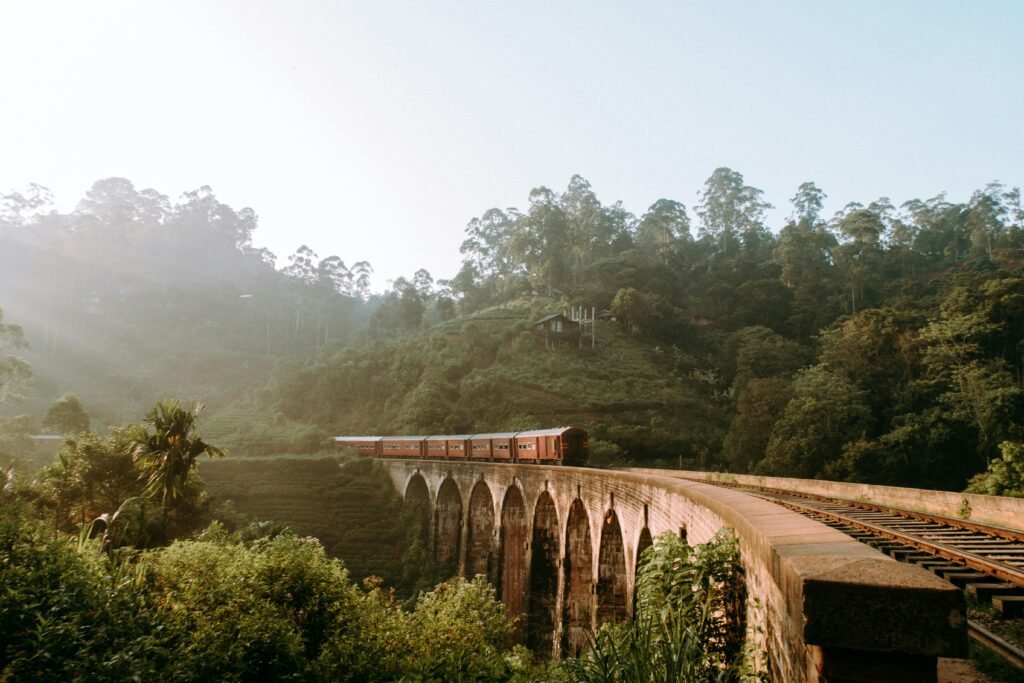
Introduction to Spiritual Escapes
In today’s fast-paced world, where daily pressures and distractions abound, the search for tranquility and serenity has become increasingly vital. Many individuals are drawn to the concept of spiritual escapes, which offer a retreat from the stressors of modern life. These escapes allow individuals to pause, reflect, and reconnect with themselves, often in extraordinarily serene environments. Among the destinations that provide such solace, monasteries in Asia stand out as unique havens for meditation and spiritual growth.
Asian monasteries have cultivated rich traditions of peace and contemplation for centuries. Nestled in the mountains, along tranquil riverbanks, or within lush forests, these sacred spaces are designed to support reflection, mindfulness, and personal evolution. The serene surroundings contribute substantially to the experience, allowing visitors to immerse themselves fully in the pursuit of inner peace.
Travelers seeking to enhance their spiritual journeys often turn to these peaceful monasteries, which offer not only a respite from hurried lifestyles but also a chance for deeper self-discovery. The practice of mindfulness and meditation, reverberating through the tranquil walls of these austere environments, reinforces the idea that such experiences are crucial for holistic well-being. Within these spaces, guided practices, workshops, and opportunities for introspection encourage visitors to cultivate a sense of peace that can be maintained long after they leave the monastery.
Ultimately, the essence of spiritual escapes lies in their capability to provide a supportive environment for individuals to explore their spirituality. This exploration may take various forms, from engaging in silent retreats to participating in communal rituals, each fostering a sense of belonging and calm. As interest in wellbeing continues to grow globally, monasteries in Asia have emerged as pivotal destinations that invite individuals to embark on a meaningful journey towards tranquility and enlightenment.
The Allure of Monastic Life
Monastic life has long captivated individuals from diverse backgrounds, drawing them to the tranquil environments of monasteries across Asia. The principles of simplicity and mindfulness lie at the heart of this lifestyle, attracting those seeking refuge from the complexities of modern existence. In many ways, the allure of monastic life serves as a counterbalance to the distractions typical of contemporary living, providing a sanctuary where spiritual practices can flourish.
At its core, monasticism emphasizes the importance of community. Monks and nuns often live and work together, fostering a sense of belonging and mutual support. This communal aspect enhances the ethos of shared goals and collective growth, allowing individuals to cultivate deeper connections with themselves and others. Within the serene walls of a monastery, one can engage in meaningful contemplation, meditation, and communal activities, fostering an enriching environment conducive to personal and spiritual development.
The historical and cultural significance of monasteries in Asia cannot be overstated. These institutions have served as vital hubs for the preservation and dissemination of spiritual teachings for centuries. From the ancient caves of India to the majestic temples of Thailand, these sacred spaces often reflect the rich tapestry of local traditions and practices, making them not only places of worship but also repositories of cultural heritage. Many visitors are drawn to these historical sites out of a desire to connect with the past and to embrace the wisdom that has been passed down through generations.
Ultimately, the appeal of monastic life lies in the combination of simplicity, mindfulness, and community. Individuals seeking peace, purpose, and profound spiritual experiences often find themselves irresistibly drawn to these sanctuaries. As modern society increasingly prioritizes material pursuits, the serene allure of monasticism offers a heartfelt invitation to explore a path less taken, guiding individuals toward a deeper understanding of themselves and their place in the world.
The Himalayan Monasteries: A Journey into the Clouds

The Himalayan region is renowned not only for its majestic mountains and rich cultural heritage but also for its tranquil monasteries, serving as sanctuaries for spiritual seekers. Tucked away amidst towering peaks, these monasteries provide a serene atmosphere that fosters spiritual growth and introspection. Among these noteworthy monasteries is the Tawang Monastery located in Arunachal Pradesh, India. This monastery, perched at an elevation of about 10,000 feet, is the largest Buddhist monastery in India and offers breathtaking panoramic views of the surrounding Himalayan range. Visitors often engage in meditation retreats, taking advantage of the peaceful environment that allows for deep reflection and inner peace.
Another notable site is the Pangong Monastery in Ladakh. This monastery is located near the stunning Pangong Lake and is renowned for its tranquil surroundings that attract many spiritual travelers each year. The monastery provides various opportunities for visitors, including meditation sessions and interactive teachings with resident monks. Such experiences not only deepen one’s understanding of Buddhist teachings but also allow for personal growth through the practice of mindfulness and meditation. The monks, sharing their insights and practices, invite seekers to explore the depths of their consciousness amidst the stunning backdrop of the Himalayas.
The Himalayan monasteries stand as places where spirituality and nature intertwine harmoniously. Their impressive architecture, profound silence, and natural beauty contribute to a unique environment conducive to spiritual exploration. Whether one seeks solitude to meditate or desires to engage with knowledgeable monks, these monasteries offer a spectrum of experiences that cater to different spiritual aspirations. Indeed, a journey to these serene abodes amidst the clouds promises not only breathtaking views but also a deeper understanding of oneself and the universe.
Tranquility in Thailand: Temple Retreats
Thailand, a country renowned for its vibrant culture and magnificent landscapes, also serves as a sanctuary for those seeking inner peace and spiritual rejuvenation through its tranquil monasteries. Among the most noteworthy are Wat Pah Nanachat and Wat Suan Mokkh, both of which embody the essence of Thai Buddhism and its unique practices such as mindfulness and meditation. These temples provide an environment conducive to relaxation and self-reflection, attracting individuals eager to disconnect from the commotion of everyday life.
Wat Pah Nanachat, known for its international meditation practice, offers visitors the opportunity to engage deeply with the principles of Theravada Buddhism. Situated in the serene countryside, this monastery serves as a key location for meditation retreats, where participants can immerse themselves in the art of mindfulness. The serene atmosphere, complemented by the natural beauty of the surrounding landscape, allows for profound personal introspection and an opportunity to explore the depths of one’s thoughts and emotions. The monks, dedicated to guiding retreatants, emphasize both the traditional and modern approaches to meditation, making it accessible to all, regardless of prior experience.
Similarly, Wat Suan Mokkh stands out as a pivotal retreat center, specializing in 10-day meditation courses. Founded by the late Ajahn Buddhadasa Bhikkhu, this monastery focuses on the integration of meditation with everyday living. Participants at Wat Suan Mokkh are encouraged to practice mindfulness in an environment free from distractions, offering a pathway to self-discovery and tranquility. The temple’s philosophy promotes harmony between mind and body, enabling individuals to embrace the present moment fully.
Both Wat Pah Nanachat and Wat Suan Mokkh exemplify Thailand’s commitment to nurturing spiritual wellbeing through its monasteries. In these peaceful temples, visitors not only discover the beauty of Thai Buddhism but also find a place to cultivate their mindfulness practice, embarking on a journey toward serenity and rejuvenation.
Serenity in Sri Lanka: Ancient Monasteries

Sri Lanka, known for its lush landscapes and rich cultural heritage, is home to some of the most tranquil monasteries that encapsulate the essence of Buddhist spirituality. Among these revered sites are the Ritigala and Dambulla Cave Monasteries, each steeped in history and embodying the serene atmosphere that seekers of peace often desire. The Ritigala Monastery, nestled within the Ritigala mountain range, dates back to the 1st century BCE and offers a unique blend of nature and ancient architecture. The area is characterized by its tranquil surroundings and rustic ruins, which are accessible via a serene trekking path. This historic site not only serves as a destination for meditation but also invites visitors to immerse themselves in the rich tapestry of Sri Lankan Buddhist traditions.
Equally compelling is the Dambulla Cave Monastery, recognized as a UNESCO World Heritage Site. It is renowned for its impressive collection of rock paintings and statues that depict the life of the Buddha. This vast cave complex, carved into the rock face, houses five main caves adorned with intricate murals that date back to the 1st century BCE as well. The Dambulla Cave Monastery retains an atmosphere of stillness that encourages deep reflection and meditation. Inhabitants and visitors alike are drawn to its sacred space, making it a haven for those looking to escape the chaos of modern life and delve into spiritual discovery.
These ancient monasteries represent a seamless blend of architecture and spirituality. With their serene environments, they provide ideal settings for meditation, fostering a sense of peace and contemplation. Travelers and spiritual seekers visiting Sri Lanka will find that these monasteries are not merely historical sites, but sanctuaries where one can engage deeply with the Buddhist philosophy and enjoy the calming embrace of nature amidst spiritual reflections.
Engaging with Local Monastic Communities
Engaging with local monastic communities offers visitors a unique opportunity to immerse themselves in the rich traditions and practices of Buddhism. Many monasteries across Asia invite guests to participate in a range of activities, allowing them to experience the tranquil lifestyle of the monks firsthand. One of the most common ways to engage is by participating in meditation sessions. These sessions typically cater to various skill levels, providing newcomers and seasoned practitioners alike with a structured environment to delve into meditation practices while being guided by experienced monks.
In addition to meditation, visitors often have the chance to attend teachings or Dharma talks conducted by resident monks. These discussions cover various aspects of Buddhist philosophy, ethics, and mindfulness, providing valuable insights into the deeper meanings behind the monastic way of life. The teachings, which often incorporate personal anecdotes and life lessons, foster an understanding of the principles that underpin Buddhist practice, encouraging guests to reflect on their own lives.
Learning about the daily routines and responsibilities of the monks is another enriching aspect of engaging with these communities. Many monasteries offer opportunities for visitors to observe or even participate in daily activities such as alms-giving, chanting, and communal meals. This participation not only provides a glimpse into the disciplined yet serene lifestyle of the monks but also highlights the communal aspects of their spiritual practice.
By engaging in these activities, visitors gain a profound appreciation for the monastic environment, developing a greater understanding of the calming practices that characterize these spiritual escapes. The integration of such experiences enriches one’s journey, creating lasting memories and insights that can transform personal perspectives on spirituality and mindfulness.
The Role of Meditation in Monastic Life
Meditation plays a pivotal role in the daily routines of monastic life, particularly within the tranquil settings of Asian monasteries. Its significance is intertwined with the fundamental principles of spirituality, mindfulness, and personal growth. In these serene environments, monks dedicate extensive periods to meditation practices, facilitating a deep connection with their inner selves and the world around them. Two prominent types of meditation found in these settings are Vipassana and Zen meditation, each contributing uniquely to the monastic experience.
Vipassana, which translates to “clear seeing,” is an ancient form of meditation that emphasizes mindfulness and insight into the true nature of reality. It is often practiced during intensive retreats, where participants engage in prolonged periods of silence and observation. This form of meditation encourages practitioners to cultivate awareness of their thoughts, feelings, and bodily sensations, leading to profound personal insights and spiritual awakening. Monasteries that offer this practice often witness transformative experiences as individuals develop a deeper understanding of themselves.
On the other hand, Zen meditation, or Zazen, focuses on the practice of seated meditation, where the emphasis lies on observing the breath and cultivating a sense of presence. This discipline fosters a meditative state of awareness that transcends the hustle of daily life. Practitioners in Zen monasteries engage in periods of sitting meditation and walking meditation, promoting tranquility and clarity of mind. The simplicity and directness of Zen practices contribute significantly to calming the mind and deepening one’s spiritual journey.
Both Vipassana and Zen meditation serve not only as tools for personal development but also as essential components of the community life within monasteries. The shared experiences of meditation bond monks, fostering a sense of unity and collective progress on their spiritual paths. Through regular meditation, monks refine their understanding of mindfulness, leading to a more meaningful and peaceful existence.
Practical Tips for Visiting Monasteries
Visiting a monastery can be a transformative experience, offering a chance for reflection and serenity. Proper preparation is essential to fully enjoy this unique retreat. Start by researching various monasteries across Asia, as they each offer distinct atmospheres, accommodations, and spiritual practices. Determine your individual needs, whether you seek meditation, yoga, or a deeper understanding of local customs and traditions. Many monasteries have websites or guides detailing their programs, which can greatly assist in making the right choice.
Before your visit, it’s advisable to prepare mentally and physically. Dress modestly, adhering to local customs as many monasteries have specific dress codes. Comfortable, understated clothing that covers shoulders and knees promotes respect in these spiritual environments. Also, consider the duration of your stay; a weekend retreat may be sufficient for beginners, while those seeking deeper insights might benefit from extended visits.
Upon arrival at the monastery, you can expect a structured schedule filled with meditation and teachings. Participate actively in the daily routines, as these practices are designed to cultivate mindfulness and focus. Silence is often observed during meals and meditation sessions, promoting an atmosphere conducive to contemplation.
Etiquette plays a crucial role in maintaining harmony in monasteries. Always seek guidance before participating in any rituals or practices, and be respectful of the resident monks and their traditions. Avoid using mobile phones or electronic devices in sacred areas, as they can disturb the tranquility of the environment.
Ultimately, visiting a monastery is about nurturing a deep sense of peace within oneself. Following these practical tips ensures a fulfilling experience that fosters spiritual growth and personal reflection.
Conclusion
Visiting monasteries offers a unique opportunity for individuals seeking tranquility and spiritual enlightenment amidst the chaos of modern life. The peacefulness found in these holy places allows visitors to escape the frenetic pace of their everyday routines, providing a sanctuary for reflection and personal growth. Monasteries, often nestled in serene natural landscapes, invite individuals to connect with both their inner selves and the greater world around them. The simplicity of monastic life serves as a reminder that true fulfillment may not be found in material possessions, but rather in mindfulness and presence.
As we explored the most peaceful monasteries in Asia throughout this blog post, it became clear that these sacred sites are much more than mere tourist attractions. They are havens where one can engage in deep contemplation, embrace the present moment, and rediscover the significance of simplicity. Each monastery, with its unique teachings and practices, offers valuable insights into cultivating a peaceful mindset, fostering a sense of community, and encouraging a deeper understanding of oneself.
By considering these spiritual escapes as destinations for both relaxation and self-discovery, individuals may find profound opportunities for transformation. A visit to any of these tranquil locales can inspire personal growth and allow visitors to reconnect with nature and the rhythms of life. Ultimately, peace can truly be found in the simplest of experiences—be it through meditation, prayer, or simply taking a breath in a serene environment. The path towards a peaceful existence is not necessarily about complex rituals or grand gestures; it is often about finding stillness amid the noise and acknowledging the beauty in simplicity.
